On Monday, May 30, Americans across the country will pause to observe Memorial Day. To learn more about the histories and traditions related to the holiday, read our blog from 2021. Today, we will take a look at what events have returned and what new options there are for those who want to honor and memorialize the brave soldiers who sacrificed their lives for this country. There are a lot of local traditions to participate in as well as national festivities.
Parades
Since 1971, Memorial Day has been celebrated on the last Monday in May. Parades have been a popular tradition and way to honor the occasion. However, due to recent years of COVID-19 restrictions, many local parades were put on pause in the name of public health and safety. For example, the annual Gilroy, CA parade was canceled last year; as their local newspaper puts it, "A holiday like Memorial Day should be a day to bring us together. Unfortunately, we can't safely gather together yet."
Now as Memorial Day 2022 fast approaches, three major cities are hosting parades to remember those who have served. Let's take a look at some of the most popular events happening this year:
- Chicago's Memorial Day Parade
- New York City's Memorial Day Parades – Brooklyn, Queens and Manhattan
- National Memorial Day Parade – Washington, D.C.
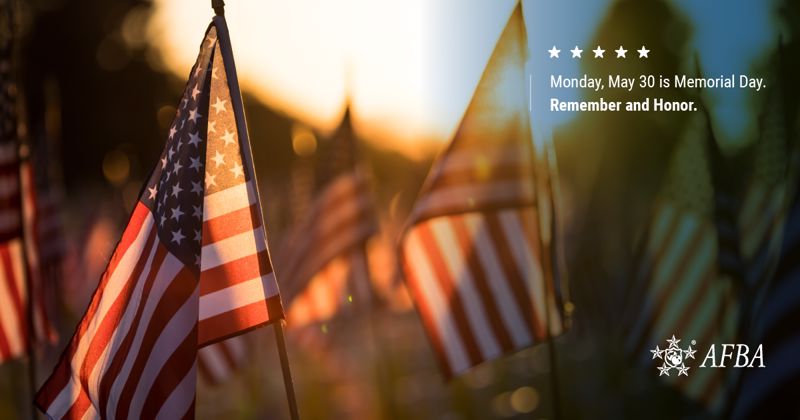
Visit the birthplace of Memorial Day
While there are many local events that memorialize those who have lost their lives in defense of the country, it may be worth it to take a family vacation to the birth of Memorial Day. In 1966, President Lyndon Johnson announced Waterloo, N.Y to be the birthplace of the holiday. The true origin of Memorial Day is debatable, with some arguing that the first true day of memory was 100 years earlier.
Waterloo itself claims that May 5, 1866, was the first day that businesses closed and the fall soldiers recognized with flags flying at half-mast. Not everyone agrees that this was the real first day, but the truth is that Americans have been honoring those who were lost protecting our freedoms.
Regardless, visiting some key sites can be a great way to learn more about the past and honor the fallen soldiers. You can visit other historic landmarks along the way to Waterloo, like Arlington National Cemetery. If you arrive at Waterloo, consider attending some of the Memorial Day events that the town holds.
Wreath Laying Ceremonies and Local Events
If traveling is not on your agenda, you can still participate in local events or even create your own! Many Veteran cemeteries encourage volunteers to help spring clean the area, or lay wreaths and flowers during the weekend of Memorial Day. Call your local town office to find out if there are any organized events your family might be able to lend a hand to. Or ask for permission to help lay flags or flowers where needed.
If your family is planning to attend a local ceremony or event, ask if they need last minute volunteer help. With responsibilities such as helping to place the flags, coordinating volunteers or attendees, and passing out supplies, the gift of helping is the ultimate thank you!
No matter how you choose to celebrate this weekend, stop and find a few moments to honor and thank those who sacrificed their lives to protect the United States of America and keep our great nation safe.
It is almost summertime, which means camping, barbecues, and best of all, summer camps for the kids. When someone in the family is in the military, their children have the opportunity to attend fun camps at discounted prices for all the same joy. Let's take a look at some of the most popular summer camps for military kids and where they are located.
What are military-based kids camps?
Military kids camps are places for children of military members to go for the summer to have a fun experience, though the attractions change from camp to camp. Many of the camps that we will discuss are targeted specifically at kids who have family in the armed forces. These camps are supposed to be fun, engaging and built for kids to learn something new and meet friends. The following camps have different age groups that the attendees are divided into. Here are a few of the best and most popular military-based kids camps.
Operation Purple Camp
This camp came from the National Military Family Association and was created to "stand up for, support, and enhance the quality of life for every military family through bold advocacy, innovative programming, and dynamic and responsive solutions." Operation Purple Camp is a place where military kids can go for a free week of fun. Children from all branches and statuses are welcome, including the National Guard, Reserve, Space Force, the Commissioned Corps of the National Oceanic and Atmospheric Administration and the United States Public Health Service.
The camp has been providing this service since 2004 and has served 3,535 military kids virtually since the start of the pandemic. Just like most summer camps, children participate in arts and crafts and outdoor activities, all supervised by trained counselors and camp staff. The organizers chose the name Operation Purple because purple is the color that results from Army green, Coast Guard blue, Air Force blue, Marine Corps red, and Navy blue.
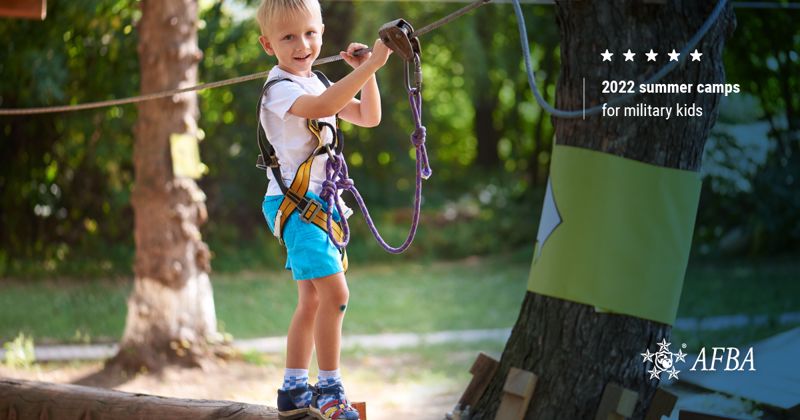
ASYMCA Camps
The Armed Services YMCA offers summer camps with military children in mind. And because it is a service of the YMCA, it is available across the country. The camp is structured to address the unique challenges of military life. Some of these struggles can include isolation, frequent moving, separation and food insecurity.
ASYMCA camps are educational and exciting, offering day and residential options to encourage healthy living and recreation. There are the typical summer camp activities but there is also a focus on meaningful connections, something that military children often struggle with due to their lifestyle.
Military teen adventure camps
Because of their funding and high participation rate, these military teen adventure camps are available coast to coast. As the name suggests, they bring military teens on incredible adventures, including rafting, hiking, camping and other engaging outdoor activities. Military teens have the opportunity to participate at little to no cost. Because there are national locations, each camp is tailored to the outdoor option available in that area.
Military teen adventure camps are hosted by The Department of Defense and the Office of Military Community and Family Policy. Search for camps based on date and location, and you are sure to find something to suit your particular adventuring fancy!
Military kids can have a rough time making friends and keeping them, but these camps can offer a way to make genuine friendships and connections. All while having fun along the way!
May is stroke awareness month, and we are taking a look into how strokes impact the military veterans of America. Regardless of age, many veterans are at a heightened risk for stroke and the impacts that come with it. When it comes to U.S. Veterans, about 15,000 of them suffer a stroke each year as a result of their service to the country. Let's go into further detail about why this is and other important resources related to stroke awareness.
How PTSD is connected with stokes
Multiple studies have found that PTSD is intrinsically linked with a person's risk of stroke. According to Reuters, one study found that "veterans with PTSD were 61% more likely than others to have a mini-stroke and 36% more likely to have a stroke." The study primarily focused on those who were a part of the Iraq and Afghanistan wars and who had no previous history of stroke incidents.
The research also showed that, while age can be a factor in determining an individual's risk, there is a link between PTSD and strokes in young or middle-aged people. Strokes occur when a blood flow to the brain is disrupted by a clot or a rupture. Because blood vessels carry oxygen and other nutrients, the cells begin to die when it is blocked from those parts of the brain.
So how does PTSD relate to that? Traumatic stress that is sustained over a long period of time, such as in combat situations, can impact the overall functionality of the brain. While not every study suggests the same thing, many of them come to similar conclusions as to why PTSD increases the risk of stroke:
- Increased hypercoagulability: Hypercoagulability is the increased tendency to form blood clots within a blood vessel.
- Damaged Catecholamine and glucocorticoid production: These are hormones that the brain produces like epinephrine and dopamine. When these hormones are impacted, these impacts can lead to a higher risk of stroke: increased blood pressure, heightened platelet aggregation, vasoconstriction, cardiac arrhythmias, elevated heart rate and increased cardiac output.
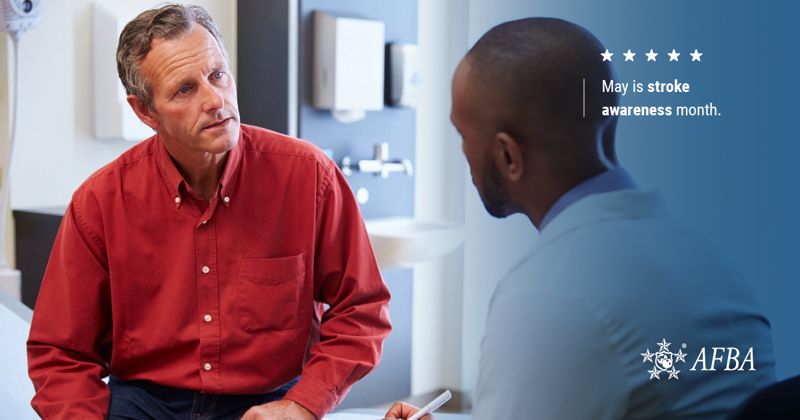
Stroke awareness
PTSD is not the only reason why veterans are likely to be the victim of a stroke. Conditions such as brain damage received from active duty can also be contributing factors. The American Heart Association has found that "those who had a head injury were 69% more likely to have a stroke," even over the long term.
Understanding that veterans are at a higher risk for stroke than their civilian counterparts can help increase awareness of the potential dangers. Stroke is the leading cause of death and disability across America, and awareness is just one piece of the puzzle and in creating prevention.
Stroke prevention
Aside from encouraging healthy lifestyle choices, there are a few things that a person can do in order to mitigate the damages of a stroke incident. There is even a helpful acronym that can help with stroke recognition and awareness:
- Face: A drooping side of the face is a key sign of a potential stroke.
- Arms: When both arms are raised above the head, does one fall lower than the other?
- Speech: Slurred speech is a red flag and a characteristic symptom of a stroke.
- Time: If you suspect a sign of stroke, call 9-1-1 right away because time is critical.
The U.S. Department of Veteran Affairs reports that about 6,000 Veterans per year are admitted to VA facilities with a stroke. If you are someone you know is at risk for a stroke, take the time to consult your physician and create a plan of prevention.
First responders lay their lives on the line to protect their communities and they are a true example of the kind of bravery that our nation benefits from. There are many different ways Americans show their appreciation and support for first responders, from parades and discounts to remembrance gardens.
With spring around the corner, the gardens are blooming and in prime condition for everyone to attend and appreciate. These locations serve as a tribute to those who were lost in the line of duty. The gardens can last hundreds of years if maintained well, and can also serve as a place for survivors to heal and others to spend a nice day. Let's take a look at some of our nation's first responder remembrance gardens.
Georgetown Community Hospital
The town of Georgetown, Kentucky recently unveiled a new garden commemorating first responders. In March 2022, the community gathered to show their support of the First Responders Memorial Garden. The garden came to fruition thanks to a partnership between the hospital and several other groups in the community. It has 5,000 daffodils that the team came together to plant in remembrance of local police, fire, EMS, and others who respond first to community emergencies.
"What a beautiful way to honor the first responders of our community," Georgetown Mayor Tom Prather told LEX18. "I know a lot of hard work went into this project, and I want to thank everyone who worked so hard to make this happen."
Garden of Honor
The Garden of Honor began as a project by an Eagle Scout, Hayes Lang, in Farmville, VA. His project aimed at memorializing first responders and veterans. With the help of other Eagle Scout members, the cemetery and community businesses, the Garden of Honor opened on June 14 of last year, after three years of preparation. Among the garden's plants are bronze sculptures of a fire helmet and police cap, which are true to size. Now, the area is not only a pleasant way to spend time outdoors but also reminds visitors of the service that first responders offer our country.
Memorial Garden in NY
When you think about remembrance gardens, New York's Memorial Garden probably comes to mind because it is one of the most famous examples. The garden commemorates those first responders and Port Authority employees who made extreme sacrifices during the terrible events of 9/11. The plaque that sits in the memorial garden reads "On the 20th anniversary of September 11, we dedicate this memorial garden in remembrance of the heroic first responders and rescue and recovery workers of the Port Authority of New York and New Jersey."
With hundreds of visitors every day, the garden serves as a reminder to tourists and locals alike of the sacrifices made. This is a perfect example of what a remembrance garden should provide to the community.
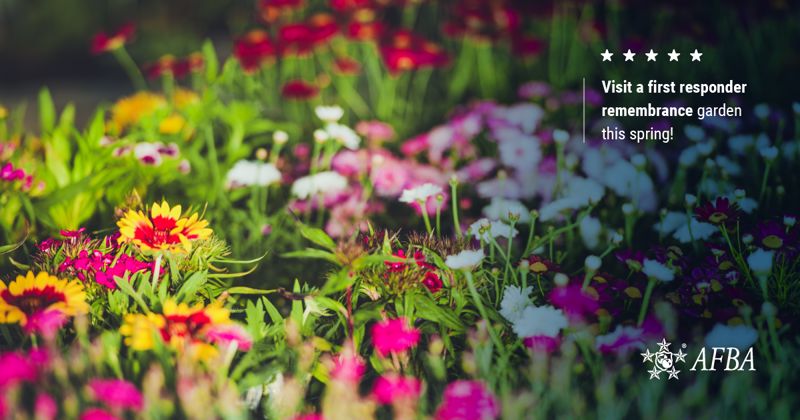
Take part
Many of these gardens are always looking for volunteers to help take care of the garden by sweeping the walkways, weeding around the plants or helping plant any new contributions. For example, the 9/11 Reflection Garden has plenty of volunteer opportunities for people who live near the location. Most locations also welcome flowers, plants or other arrangements to adorn the area. Even if you aren't sure if you know how to create a memorial garden yourself, taking the time to visit the garden this spring and summer is a way to pay tribute.
Members of the military and first responders have long been active in the Olympic competition, and the 2022 Beijing Olympics is no exception. This year, America cheered on California wildland firefighter Robby Burns, who was on the U.S. Olympic snowboarding team. The professional from Mt. Shasta competed in men's parallel giant slalom. Let's take a look at his 2022 run and his contribution to battling the raging fires in California.
Getting to the top
Burns's own website describes him as a snowboarder, a firefighter and a speaker. He started his snowboarding journey when he was young, began competing professionally in 2014, and 2022 was Burns's first time in the Olympics.
At 31 years old, he is not only a qualifying Olympian but works for the U.S. Forest Service as a firefighter during the summer. Burns' firefighting career is as impressive as his athletic ability. During his time fighting fires, he was a part of a hotshot crew, called the Shasta Lake Hotshots. These are the people who are deployed to fight the most intense and hot parts of the fire. Most recently, Burns and his crew were out fighting the Californian Dixie Fire, which was massive enough to have burnt 900,000 acres. Not only that but he was on the crew that fought the Monument Fire. Located in Del Loma, CA, the fire burned 223,124 acres.
For the last five years, Burns has been a professional snowboarder, as Wildfiretoday reports. During his time competing, he wore a belt buckle to represent and call out his fire crew, which he received for being in the crew for three consecutive years. Burns' journey to the Olympics really started when he finished first in the Nor-Am Cup Parallel Giant Slalom race in Steamboat Springs, Colorado. There was a minor setback when he injured his leg during one of his training sessions. Because of this, Burns missed some of the 2021 World Cup tours in Russia.
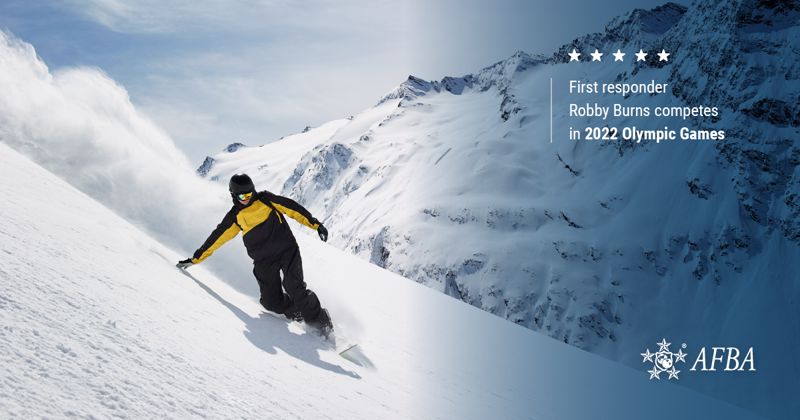
The Olympic journey
During his time in Beijing, Burns needed a combined time of 1:22:48 to make it to the medal rounds. Burns' is a two-time All-American and gold medal-winning snowboarder. Those accolades were achieved when he was in college at the University of Idaho. In 2022, he missed qualifying for the 2018 Games in Pyeongchang by one slot.
Other first responders who competed
Due to their drive and determination in everything that they do, there are usually quite a few first responders representing America. Here are some of these firefighters who have competed in the past and present Olympics:
- Lea Ann Parsely: Now retired, Lea Ann was the first female skeleton athlete to win both a world cup and bring home an Olympic medal.
- Jimmy Watkins: This first responder finished sixth in the men's cycling sprint in 2012, which was the best in 12 years at the time.
- Lovie Jung: In 2008, Lovie won a silver medal with her team in Softball. Now, she is an active firefighter and paramedic for The City of Riverside Fire Department.
There is a long history of first responders and military members who excel in their chosen sport well enough to make it to the Olympics. Robby Burns is another example of this devotion — whether it's a professional sport or saving lives.
On February 11, 2022, Carlos Del Toro, the Secretary of the Navy, extended the Secondary Caregiver Leave(SLC). This means that paternity leave is no longer two weeks but is now three weeks and provides up to "21 days of non-chargeable leave to parents who are designated as secondary caregivers per the Military Parental Leave Policy." The same is true of the Marines. Instead of paternity leave, it is called secondary caregiver.
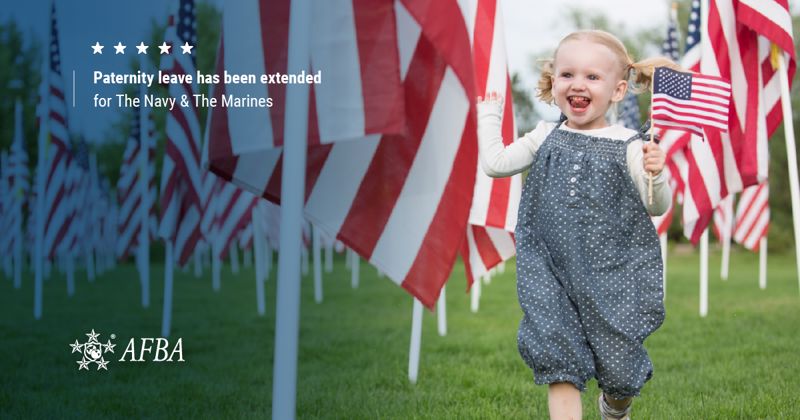
The Navy
According to a Navy press release, "This policy change aligns secondary caregiver leave duration in the Navy and Marine Corps with that in the Army and Air Force. The extension to three weeks comes in advance of an increase to twelve weeks authorized in the recently enacted NDAA, which will become effective at the end of 2022." The leave is non-chargeable which means that it does not "count against a member's earned leave balance.
Vice Adm. John B. Nowell, Jr. the chief of naval personnel was quoted several times in the press release.
"Navy is dedicated to supporting our new parents, and we fully understand that our families are as much a part of our service as our Sailors," he said.
Keep in mind that sailors who are currently on parental leave are not eligible for more time. However, those who are about to embark on their leave can take the full 21 days.
The Marines
Following suit, the Marines also extended their second parent leave during the beginning of their child's life. Del Toro said in the Marines' press release. "The expansion of caregiver leave will provide additional relief to the families of Marines and Sailors, further improving Marine and family readiness, as well as recruiting, retention, and overall talent management of the force."
While this change was not anticipated by some, it reflects the Department of Defense's emphasis on family and community connection during difficult times. Note that the Secondary Caregiver Leave can be taken at the same time as a Maternity Convalescent Leave. This is because it is part of the bigger program which is called the Military Parental Leave Program.
The Army and Airforce
The army and airforce increased their paternity and secondary caregiver leave several years ago. The Airforce did this in 2018. Its press release at the time said, "effective immediately, the new policy applies to Total Force Airmen who are birth mothers and fathers, same-sex couples, as well as adoptive and surrogate parents."
The Army extended its leave in 2019, citing that it wanted to increase its members' flexibility as it relates to family reunification. The branch doubled its parental leave for secondary caregivers and added more for maternal leave. On January 23, 2019, the Secretary of the Army at the time, Mark T. Esper signed this directive.
Now, the Marines and the Navy have the same orders and the opportunity for the secondary caregivers to bond with their newborn babies
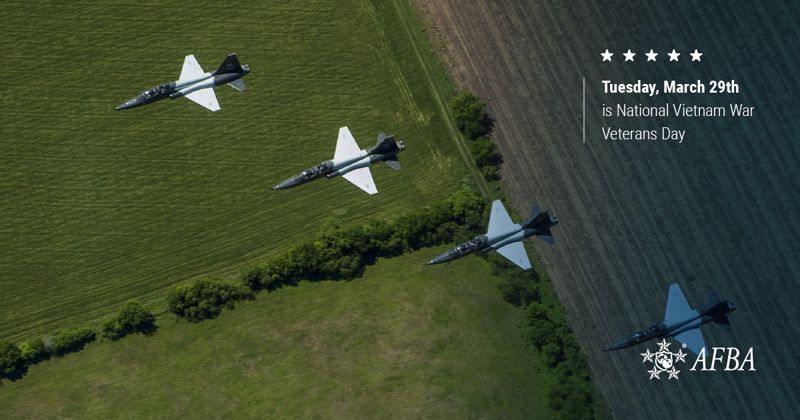
March 29 is National Vietnam War Veterans Day and we're encouraging our readers to tune into some of the best-rated and well-known documentaries that capture the significance of the Vietnam War. Over the years, new information and interviews reveal more details and footage of what the Veterans and their families experienced during this difficult time. Honor a Vietnam Veteran today by taking some time to educate yourself and others about the facts, the impact, and the importance of this period in American history.
Here is our top five list:
In the Year of the Pig (1968)
This documentary has long been touted as one of the best documentaries about the Vietnam War by film critics. Created in 1968 by the director Emile de Antonio, the film has many experts and professionals that have personal experience with the war. From members of the military to CIA agents, the Year of the Pig was one of the first to document the brutal war in this way. There is historical footage and interviews, all done in black and white, which was normal for the time. Because of its content, the documentary has had an impact on the way we think about the war now.
Vietnam: The Ten Thousand Day War (1980)
This is a 26 part mini-series that was produced by Michael Maclear, later consolidated into a 12 episode series where each installment was longer. For this documentary, Maclear visited Vietnam and was the first Western journalist to be allowed to visit Vietnam since the end of the war. Additionally, a writer for the docuseries was Peter Arnett, who was an Associated Press reporter in Vietnam from 1962 to 1975.
The War at Home (1979)
This documentary shares another angle of the Vietnam War. It focuses on the anti-war movement in the Madison, Wisconsin region of America. The film has real footage from the protests and interviews with people who participated in them. The War at Home uncovers the sentiment of many in the United States at the time. It was nominated for an Academy Award for Best Documentary Feature in 2008.
Hearts and Minds (1974)
Premiering at the 1974 Cannes Film Festival, this documentary has its own interesting history. Columbia Pictures would not distribute the film due to legal issues which required the people who made the film to purchase back the rights. The documentary showcases two narratives: the military's strategic planning and the repercussions of the war on American families. Hearts and Minds was selected for the National Film Registry by the Library of Congress as being "culturally, historically, or aesthetically significant."
The Vietnam War (2017)
A Ken Burns and Lynn Novick film, the Vietnam War is a ten-part documentary. According to PBS, where it first aired, the docuseries contains "revelatory testimony of nearly 80 witnesses from all sides—Americans who fought in the war and others who opposed it, as well as combatants and civilians from North and South Vietnam." It reportedly took the team ten years to create and document, and it contains a score of music that was specifically made for the film.
February 18 is National Caregivers Day, and we are taking this opportunity to spotlight the caregivers who serve those who serve America. The day of recognition occurs every year on the third Friday in February. Caregivers are unsung heroes, working to support individuals and families in their times of need.
Caregivers for disabled veterans
It is not uncommon for those who have served in war or other capacities to have service-related injuries and disabilities. In a survey published by Statista Research, they found that there are more than 1.5 million veterans who have a 70% or higher service-connected disability rating. This means that at least a few of those individuals need a caregiver in some capacity.
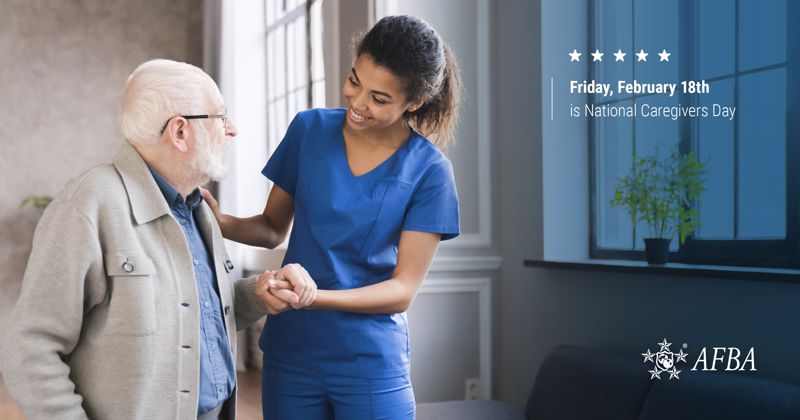
Unpaid caregivers
A caregiver can be anyone, paid or otherwise, who helps someone who is elderly, sick or disabled do everyday things. They can be family members, friends or a professional. This individual should be the one who helps the person in need by supporting their health, personal needs and safety. From bathing and dressing to grocery shopping, the caregiver is there every step of the way. A study conducted by AARP found that one of every five family caregivers is unpaid.
The U.S. Department of Veterans Affairs has a program for comprehensive assistance for family caregivers because these people often set aside their personal lives in order to care for the veteran who needs them. Here are some of the requirements someone must have to qualify for the program:
- Be a spouse or family member of the veteran.
- Live full time with the veteran or is willing to do so.
The program offers the caregiver a monthly payment, health care benefits, training, mental health counseling and other assistance.
Caring for an active duty military member
Those who have retired from their service are not the only ones who need assistance. Active-duty servicemen and women need help sometimes too. Physical wounds and accidents happen, and it is not uncommon for a caregiver to provide some help while they heal. The same is true for those who have suffered from PTSD as a result of their service. This mental ailment can be incredibly disruptive to everyday life. Here are some examples of caregiver tasks according to the Army Public Health Center:
- Assist a Service member with day-to-day tasks.
- Provide a Service member with emotional support.
- Advocate for treatments for a Service member.
- Oversee legal or financial responsibilities for a Service member.
- Coordinate care and schedules.
If you identify with any of the above experiences, you are probably a caregiver whether you know it or not.
Showing recognition
The day of recognition was first established by the Providers Association for Home Health & Hospice Agencies in 2015, first occurring in 2016. It is a great opportunity to thank the person in your life who you know dedicates their life to care. These people often put others' needs before their own.
February is Black History Month and, while it is important to take note of history all year round, we're using this opportunity to share and honor Black veteran stories. This month, we're highlighting the inspiring story of Black American war veteran Roy M. Johnson, Sr. who fought bravely as a medic in the Korean War, Black Americans faced inequalities on the front lines and at home when they returned from war, despite their contributions to the country.
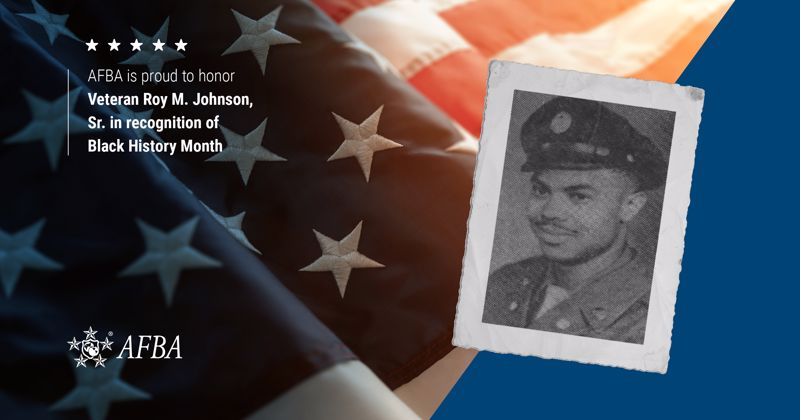
A story of bravery
Roy Johnson was born in 1922 in Lincolnton, GA. Just over 20 years later, he was drafted into the war in Europe where he served until it ended. His story is one of bravery, perseverance and service to the United States of America.
By 1950, Sergeant Roy Johnson was a medic in the US Army. Like most active military members of the time, there came an opportunity for him to volunteer for a dangerous mission, where he would risk his life further to protect his country and his deep-held beliefs. Sergeant Roy accepted the mission and was sent to the frontlines of the Taejon area in Korea. There, his task was to get the wounded soldiers from the frontline and bring them back to the first aid station.
The backroads of the countryside were notoriously confusing and difficult to navigate, and Sergeant Johnson's journey to the Taejon area was no exception. At a crossroads, his path intersected that of several enemy tanks that had somehow broken through American lines. He came under unexpected enemy fire, especially because his vehicle was marked with the Red Cross symbol. His traveling companion was killed in the onslaught and Sergeant Johnson's hand became badly wounded (later it would be completely amputated).
Sergeant Johnson fell off the vehicle and while laying on the ground, was subsequently shot three times in the back. An hour after this conflict, when the enemy was gone, he climbed onto another medical vehicle and drove himself to find his comrades. Badly wounded, he lost consciousness immediately.
Not yet completely safe, the field hospital where he was taken to be cared for fell under enemy machine gunfire. Escaping the enemy once again before the hospital was taken by the North Koreans, Sergeant Johnson was sent first to Japan and then to Walter Reed Medical Center. Not only is this the hospital where his hand was amputated — it's where he met Sergeant Alfonzo Spencer (the father of current AFBA President, General Larry Spencer). The two would become deep friends for the rest of their lives.
Before being discharged from the army in 1958, Sergeant spent another eight years at Bethesda Naval Hospital where he was an Occupational Therapy Technician who trained other war amputees on how to use their new prosthetics effectively. Along with his honorable memory of service, Sergeant Johnson lives in Maryland today with his children.
To learn more about this inspiring Korean War Veteran, check out our YouTube channel.
Accessibility of healthcare and COVID-19 prevention tools has been a serious topic of conversation the past two years, amidst the coronavirus and its many strains. The Biden administration launched its at-home COVID-19 test kit and its website on January 19th. Here is what you need to know about how to get the at-home tests and the accompanying N95 masks.
U.S. government offers free at-home testing
This new government effort will provide up to four at-home COVID tests per family. According to the White House press release that was given on January 14, "Public health experts and the Centers for Disease Control and Prevention recommend that Americans use at-home tests if they begin to have symptoms, at least five days after coming in close contact with someone who has COVID-19, or are gathering indoors with a group of people who are at risk of severe disease or unvaccinated."
The accessibility of this program offers Americans a way to easily mitigate their own risk as well as the risk they might pose to their family and community. According to the CDC, a robust and responsive testing infrastructure is a very important component in stopping the spread of COVID-19. The rollout of free tests is a step in the right direction.
How to get your tests
In order to provide four free tests to every American household, the Biden Administration purchased "one billion at-home, rapid COVID-19 tests." Because these tests have already been procured, they have partnered with the United States Postal Service (USPS) to package and deliver tests to those who order them.
To order your tests simply go to the covidtest.gov site that is devoted to distributing them. It is important to note that the tests take 7-12 days to ship Because of this, it's recommended to order the four free kits before you may need them so that you are prepared with resources already at home versus running around to find at-home testing options once sick or exposed. If you or someone in your household needs a test as soon as possible, check out this state-based resource.
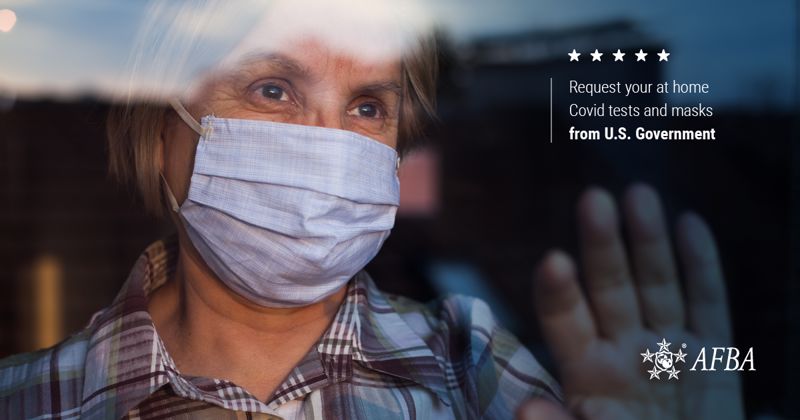
Getting your free N95 masks
Not only is the government offering free tests, they are also providing N95 masks to those who request them. The White House announced that the masks will come from the government's Strategic National Stockpile, which has more than 750 million masks available.
The masks are available for pickup at community health centers that have partnered with the federal government's COVID-19 vaccination campaign. The program begins January 24, and is thought to be fully rolled out at the beginning of February, according to the Wall Street Journal. This project is not fully-fledged yet, but the first murmurings are promising.
The new free at-home COVID-19 testing and masks are an exciting opportunity to help fight the pandemic. Check out the government website to get started today!
